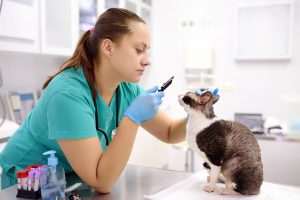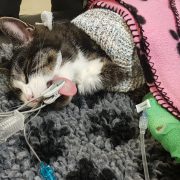Peripheral vestibular syndrome in cats: Clinical presentation, diagnostic findings and outcome in 196 cases
Peripheral vestibular syndrome in cats: Clinical presentation, diagnostic findings and outcome in 196 cases

Open access
In our edition of: Aug 2025
In our categories of: small animals
our summary:
Caldero Carrete, J. et al. (2025) Peripheral vestibular syndrome in cats: Clinical presentation, diagnostic findings and outcome in 196 cases. Veterinary Record, e5324
The aim of this study was to determine the prevalence of the different causes of peripheral vestibular syndrome (PVS) in cats, and to describe clinical presentations, diagnostic findings, outcomes, and possible risk factors.
The medical records of four referral hospitals were searched for cases of cats with PVS. Cases were excluded from the study if the cats had not undergone either magnetic resonance imaging (MRI) or computed tomography (CT) of the head, if they had signs consistent with peripheral vestibular dysfunction but advanced imaging findings indicated central vestibular involvement, and if the records were incomplete
Data extracted from the records included the onset, progression and duration of clinical signs, physical and neurological examination findings on admission, findings of diagnostic tests, histology, and treatment and outcome where available.
A total of 196 cats were included in the study. The most commonly diagnosed conditions were otitis media/interna (OMI) (140 cats) and idiopathic vestibular syndrome (IVS) (47 cats). MRI was performed in 147 cases, of these 102 had abnormal MRI findings, with abnormalities identified in the middle and/or inner ear in 99 cats. CT was performed in 70 cases, abnormalities in the middle and/or inner ear were found in 64 of these cats.
A diagnosis of OMI, rather than IVS, was associated with a history of otitis externa or upper respiratory signs, facial nerve paralysis and Horner syndrome. Duration of clinical signs and younger age at diagnosis were also associated with a diagnosis of OMI (median age at diagnosis 84 months vs 117 months for IVS).
Follow-up data was available for 104 cats; 33 cats had a full recovery and 67 a partial recovery. There was no recovery in four cats. There was no of difference in the degree of recovery between cats with OMI that had intracranial extension and those that did not. The majority of cats diagnosed with PVS had a complete or partial recovery, although residual neurological deficits were common.
Limitations of the study include the retrospective nature, that there was no standardisation of imaging techniques, diagnostic tests, or treatment methods across the referral hospitals, and that some records contained incomplete outcome data. As the study only included referral populations, they may not be representative of the cat population seen in primary care practice.
This study provides some evidence that otitis media/interna is a common condition in cats with peripheral vestibular syndrome in cats and identifies risk factors for OMI. This information will help veterinary surgeons in determining the most likely diagnosis for cats with peripheral vestibular syndrome.
Claiming CPD for reading inFOCUS articles
Reading and reflecting on articles can count towards your CPD, and we have a template to help you with the process.
Image copyright attribute: marysmn







Leave a Reply
Want to join the discussion?Feel free to contribute!